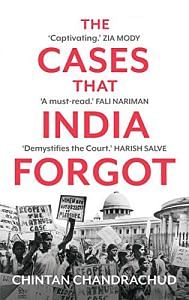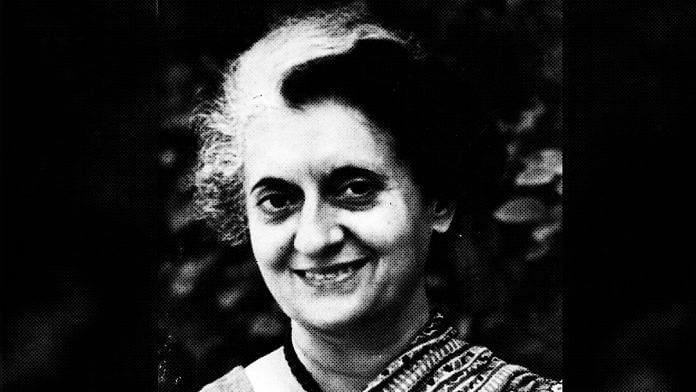Established in the early twentieth century, Minerva Mills was a textile mill located near the Bangalore city railway station. Its many workers included the father of Nandan Nilekani, who would one day become the CEO of Infosys Technologies. The Congress government had nationalized it in the early 1970s claiming that it was mismanaged. In 1977, the erstwhile owners approached the Supreme Court to challenge its nationalization.
At around the time the case was filed, Nani Palkhivala, India’s foremost constitutional litigator who also appeared against the Congress government in the Kesavananda case, was appointed ambassador to the United States by the Janata government. Soon after his appointment was announced, Palkhivala said in a telephone interview to the New York Times: ‘My thinking does indeed seem to be in line with the thinking of President Carter, and the American people, on things like human rights.’ However, Palkhivala soon felt the urge to return to India to protect human rights through the courts, and resumed practice in time to argue the Minerva Mills case on behalf of the previous owners.
At its heart, the case involved the government’s nationalization powers and the right to property. However, the fundamental right to property under the Constitution had just been deleted in accordance with the Janata Party’s election manifesto. The precise reasons for which the right was deleted are unclear, although it was speculated that the manifesto pledge was made to secure the political support of the communist parties and others.
Also read: Emergency-era censorship affected films so badly that even a spot of blood was cut out
Palkhivala devised the strategy of arguing the case by challenging the Congress government’s amendments to the Constitution rather than the Janata amendments. Instead of arguing that the (Janata government’s) constitutional amendment deleting the right to property was itself unconstitutional because it violated the basic structure of the Constitution, he used the case as a vehicle to challenge constitutional amendments passed during Indira Gandhi’s tenure as prime minister.
The Congress government had secured amendments to Article 368 of the Constitution to give Parliament unfettered powers to amend the Constitution and also to take away the jurisdiction of the courts to review such amendments. Therefore, the first issue for the court’s consideration in the Minerva Mills case was whether the amendments to the Constitution adding two new clauses to Article 368 (with a view to nullifying the Kesavananda judgement) were valid. (If these amendments were invalid, then the Janata government’s amendments deleting the right to property as a fundamental right would also be open to judicial scrutiny.) Palkhivala aimed to do in the Supreme Court what the Janata government failed to do politically – nullify the Congress government’s constitutional amendment overruling the Kesavananda judgement. The specific circumstances of the Bangalore mill soon fell into the background, with the vexed question of whether there were any limits at all on Parliament’s power to amend the Constitution once again taking centre stage.
The amendments to Article 368 presented a formidable obstacle to the Kesavananda judgement. The reason for this was that although seven of the thirteen judges in the Kesavananda case held that Parliament lacked the power to alter the basic structure of the Constitution, they arrived at this conclusion for different reasons.
While some of the judgements were based on the idea that the word ‘amendment’ could not mean replacement with a practically new and different Constitution, others noted that the limitation on Parliament’s power to amend the Constitution was implied in the scheme of the Constitution. By specifically clarifying that the power to ‘amend’ was boundless, the Congress government’s amendments appeared to decisively address the first set of judgements.
Palkhivala formulated three powerful arguments in seeking to convince the Supreme Court to dislodge the amendments. First, ‘the donee of a limited power cannot, by the exercise of that very power, convert the limited power into an unlimited one’. To do so would allow Parliament, a creature of the Constitution, to become its master. Second, the limited amending power was itself a basic feature of the Constitution. Following the court’s decision in the Kesavananda case, Parliament had no authority to disturb that feature. Third, by stating that no court would have the power to pronounce upon the validity of a constitutional amendment, the amendment damaged the balance of power between the judiciary and Parliament.
Also read: For the first time, India is seeing secularism go from a top-down decree to a street slogan
Palkhivala used the Minerva Mills case as a platform to challenge another Emergency-era amendment to the Constitution. The Congress government had secured an amendment to Article 31C of the Constitution which protected from the scrutiny of two fundamental rights (the rights to equality and freedom) all laws that gave effect to any of the directive principles under the Constitution. In other words, no law that gave effect to one or more of the directive principles could be struck down by a court on the basis that it violated, say, the right to freedom of speech or the right to equality.
Palkhivala’s argument against this amendment was based on principle and pragmatism. Article 31C embodied the ‘quintessence of authoritarianism’: the difference between authoritarianism and democracy was that ‘the former subordinates human freedoms to directive principles of state policy, while the latter achieves the same objectives while respecting human freedoms’. In practical terms, to limit Article 31C to laws that gave effect to directive principles was meaningless, as the directive principles covered the whole spectrum of governance. Almost every law enacted by the government could be associated, in one way or another, with a directive principle.
Also read: In 2020, don’t rely on routine rallies and marches. Modi’s India needs new ways to protest
By the time the Minerva Mills case arose for hearing, Morarji Desai’s Janata Party government had fallen and a ‘caretaker’ government (led by Prime Minister Charan Singh) was in place until the conclusion of the next general elections.
Attorney General L.N. Sinha and Additional Solicitor General K.K. Venugopal argued the case on behalf of the government. In Sinha and Venugopal, Palkhivala faced formidable opposing counsel. Sinha was a stalwart of the bar who was ‘hero-worshipped’ by young lawyers at the time. Venugopal was a rising star who would go on to practise at the Supreme Court for over five decades and be appointed attorney general by the Modi government in 2017.
As law officers during the Charan Singh government, Sinha and Venugopal were in the precarious position of defending constitutional amendments that were made by the Congress government during the Emergency.
 This excerpt from Chintan Chandrachud’s The Cases That India Forgot has been published with permission from Juggernaut Books.
This excerpt from Chintan Chandrachud’s The Cases That India Forgot has been published with permission from Juggernaut Books.




India is truly a Communist country like no other. The fundamental right to property which was abolished by the Janata government has never been reinstated, irrespective of which party came to power.
There is a special place reserved in heaven for brilliant lawyers who argue on behalf of the indefensible, sometimes even the truly evil. Mrs. Gandhi – unlike her father – had no instinctive attachment to the Constitution or the sense of fair play it sought to bring to public life.